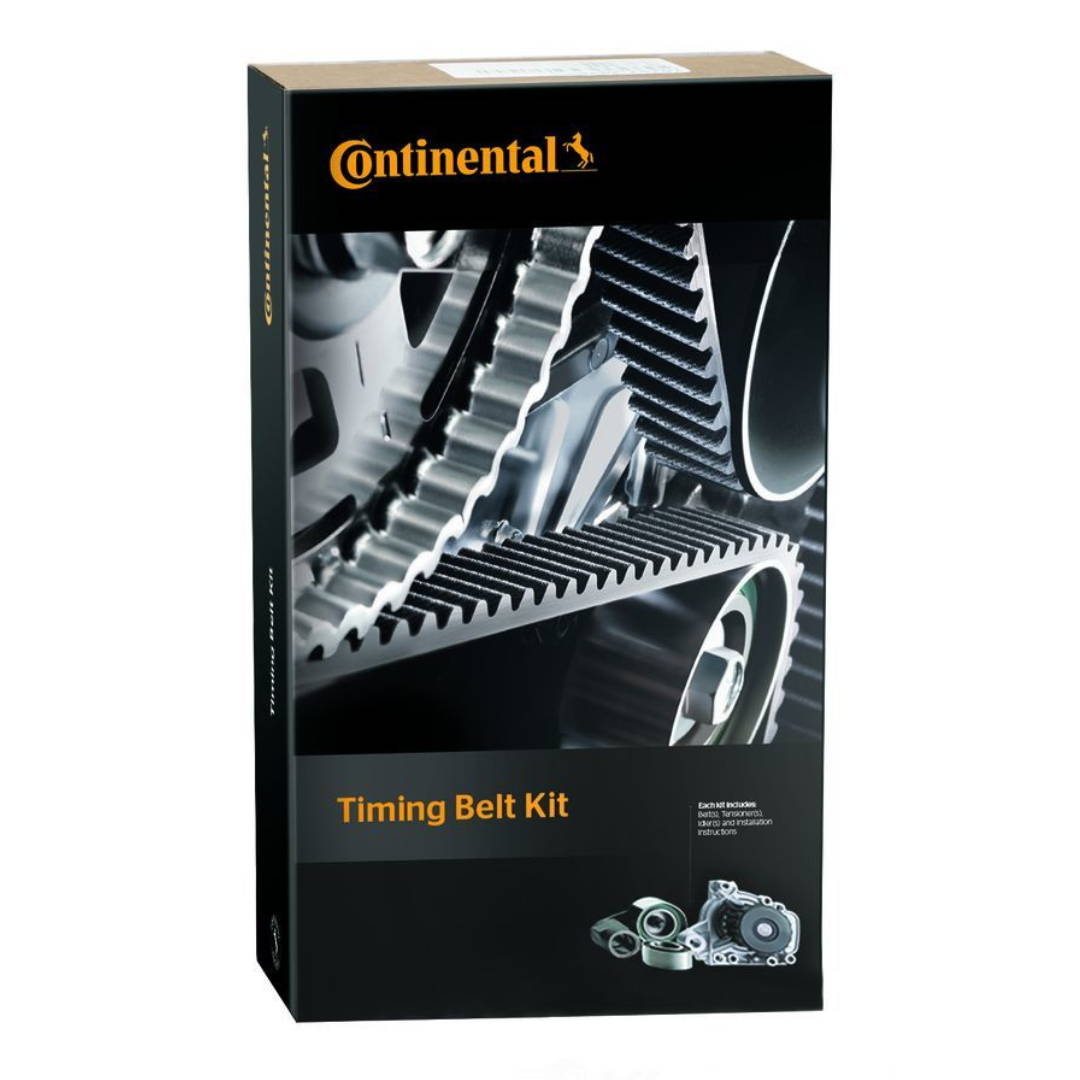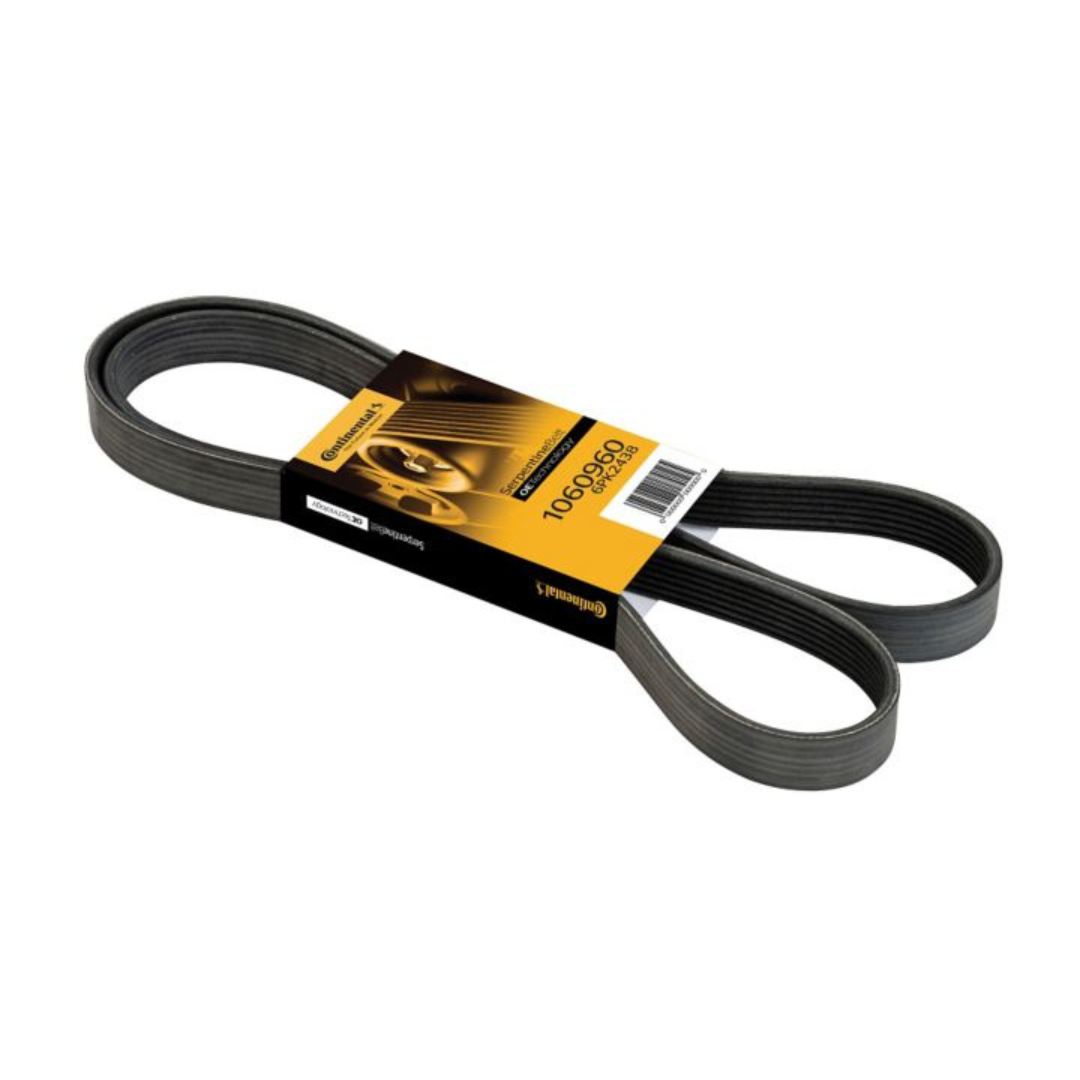The Importance of Timing Belts: A Comprehensive Guide

Introduction:
In the world of automotive engineering, various components work together to ensure the smooth operation of a car's engine. One such critical component is the timing belt. Responsible for synchronizing the rotation of the crankshaft and camshaft, the timing belt plays a vital role in maintaining engine efficiency and performance. In this article, we will delve into the intricacies of car timing belts, their importance, maintenance, and potential consequences of neglecting them.
What is a Timing Belt?
The timing belt is made of rubber and has teeth or cogs along its inner surface. These teeth align with corresponding gears or sprockets on the crankshaft and camshaft(s). As the crankshaft rotates, it transfers power to the camshaft(s) via the timing belt.
The precise timing of valve opening and closing is essential for proper engine operation. The timing belt ensures that the valves open and close at specific intervals, synchronizing their movements with the rotation of the crankshaft. This synchronization allows for efficient intake of fuel-air mixture into the combustion chambers and effective expulsion of exhaust gases.
Due to its vital role, it's important to regularly inspect and replace the timing belt according to the manufacturer's recommendations. Over time, the rubber can deteriorate or become damaged, leading to potential belt failure. If a timing belt breaks or slips, it can cause significant engine damage due to interference between pistons and valves.
In recent years, some vehicles have transitioned to using timing chains instead of belts. Timing chains are generally more durable but require regular maintenance and may be noisier than belts. However, many cars still rely on timing belts as they are quieter, lighter, and more affordable to replace.
Importance of Timing Belts:
Synchronization: The timing belt plays a critical role in synchronizing the movements of the crankshaft and camshaft(s). This synchronization ensures that the valves open and close at the right time in relation to the pistons' position. If the valve timing is off, it can lead to what's known as valve-piston interference, where the valves and pistons collide. This collision can cause severe damage to both components, potentially resulting in bent valves, damaged pistons, or even a catastrophic engine failure. By maintaining proper synchronization, the timing belt helps prevent such issues and keeps the engine running smoothly.
Efficiency: Precise valve timing achieved by the timing belt has a direct impact on engine efficiency. When the valves open and close at specific intervals, it allows for optimal intake of fuel-air mixture into the combustion chambers and efficient expulsion of exhaust gases. This efficient operation enhances power output while minimizing fuel consumption. Additionally, accurate valve timing contributes to smoother engine operation, reducing vibrations and noise levels.
Engine Longevity: Proper maintenance and replacement of the timing belt are crucial for ensuring the longevity of an engine. Over time, a timing belt can deteriorate due to factors like heat, oil contamination, or general wear and tear. If a worn-out or damaged timing belt fails while the engine is running, it can result in extensive internal damage. Replacing the timing belt according to the manufacturer's recommended intervals helps prevent premature wear, reducing the risk of costly repairs or even engine replacement. Regular inspections allow for early detection of any signs of wear or potential issues with the timing belt, enabling timely replacements and preserving engine longevity.
Signs of a Worn Timing Belt:
Visible Damage: Regularly inspecting the timing belt for visible signs of damage is important. Look for cracks, fraying, or missing teeth on the belt's surface. These issues can weaken the belt and increase the risk of failure. If you notice any visible damage, it's essential to replace the timing belt promptly.
Noisy Operation: Unusual noises coming from the engine area may indicate a loose or damaged timing belt. A slapping or rattling sound might suggest that the timing belt is loose or worn out. This noise can occur due to excessive slack in the belt or when it's not properly aligned with the gears or sprockets. If you hear such noises, it's advisable to have your timing belt inspected and potentially replaced.
Engine Misfires: A faulty or worn-out timing belt can disrupt the engine's timing, leading to misfires. Engine misfires occur when one or more cylinders do not ignite properly, resulting in rough running or irregular engine performance. If your engine starts misfiring, running unevenly, or experiencing a loss of power, it's crucial to have your timing belt checked as it could be the underlying cause.
Difficulty Starting: A worn-out timing belt can cause starting problems. If you experience extended cranking times before your engine starts or if your engine fails to start altogether, it could be due to an issue with the timing belt. The worn-out belt may not be able to maintain proper tension or synchronization, making it difficult for the engine to start.
Reduced Performance: A worn timing belt can negatively impact engine performance. If you notice decreased power output, sluggish acceleration, or a general lack of responsiveness from your engine, it could be a symptom of a worn timing belt. As the timing belt wears out, it may slip or lose synchronization with the crankshaft and camshaft(s), affecting valve timing and overall engine performance.
It's important to note that these warning signs can also indicate other issues with your vehicle's engine. Therefore, if you experience any of these symptoms, it's recommended to have your vehicle inspected by a qualified mechanic to accurately diagnose and address the problem.
Maintenance and Replacement:
Manufacturer Recommendations: It's important to consult your vehicle's manual for specific guidelines on when to replace the timing belt. The replacement interval can vary depending on factors such as the make and model of the vehicle, engine type, and driving conditions. Typically, manufacturers recommend replacing the timing belt every 60,000 to 100,000 KM or after a certain number of years. Following these recommendations ensures that the timing belt is replaced before it becomes too worn and prone to failure.
Visual Inspection: Regularly inspecting the condition of your timing belt is crucial for identifying signs of wear or damage. Look for any cracks, fraying, or missing teeth on the belt's surface. Additionally, check for oil contamination or signs of excessive stretching. If you notice any of these issues, it's time to replace the timing belt. It's worth noting that some vehicles have timing belts covered by a protective cover or housing, making a visual inspection more challenging. In such cases, relying on manufacturer recommendations becomes even more important.
Tensioner and Pulleys: When replacing the timing belt, it's essential to inspect and potentially replace the tensioner and idler pulleys as well. The tensioner maintains proper tension on the timing belt, ensuring it remains in contact with the gears or sprockets on the crankshaft and camshaft(s). Over time, the tensioner may become worn or lose its effectiveness, leading to inadequate tension on the belt. Similarly, the idler pulleys can experience wear or develop bearing issues that can impact the performance and longevity of the new belt.
Replacing these components along with the timing belt helps ensure optimal operation and longevity of the entire system. Neglecting to replace a faulty tensioner or worn pulleys could lead to premature failure of the new timing belt.
By following these maintenance practices, you can help prolong the life of your engine and minimize the risk of costly repairs due to timing belt failure.
Consequences of Neglect:
Engine Damage: When a worn-out timing belt breaks while the engine is running, it can have severe consequences. The timing belt is responsible for synchronizing the movements of the crankshaft and camshaft(s). If the timing belt fails, the valves and pistons can collide, resulting in what's known as valve-piston interference. This collision can cause significant damage to the engine components. Bent valves, damaged pistons, or even a complete engine failure are possible outcomes. Repairing such engine damage can be complex and costly.
Costly Repairs: Repairing an engine damaged by a broken timing belt often requires extensive repairs or even an entire engine replacement. Fixing bent valves or repairing damaged pistons can involve labor-intensive procedures, including disassembling the cylinder head and possibly the engine block. These repairs can be time-consuming and require specialized knowledge and equipment. In some cases, the cost of repairing the engine may exceed the value of the vehicle itself, leading to difficult decisions regarding repair or replacement.
Stranded on Road: A failed timing belt can leave you stranded in an inconvenient location or during unfavorable weather conditions. When the timing belt breaks, the engine will stop running immediately, potentially leaving you stranded on the side of the road. This situation can be especially frustrating if it occurs in remote areas or places with limited access to assistance. Being stranded due to a broken timing belt can cause inconvenience and potentially compromise your safety.
To avoid these consequences, it's crucial to adhere to manufacturer recommendations for timing belt replacement and regularly inspect its condition.
By being proactive about maintenance and addressing any signs of wear or damage promptly, you can prevent unexpected breakdowns and costly repairs
 Loading . . .
Loading . . .




